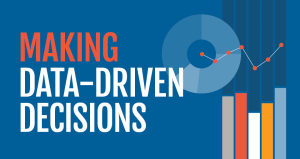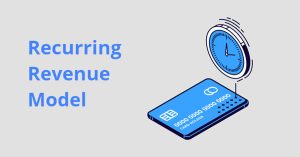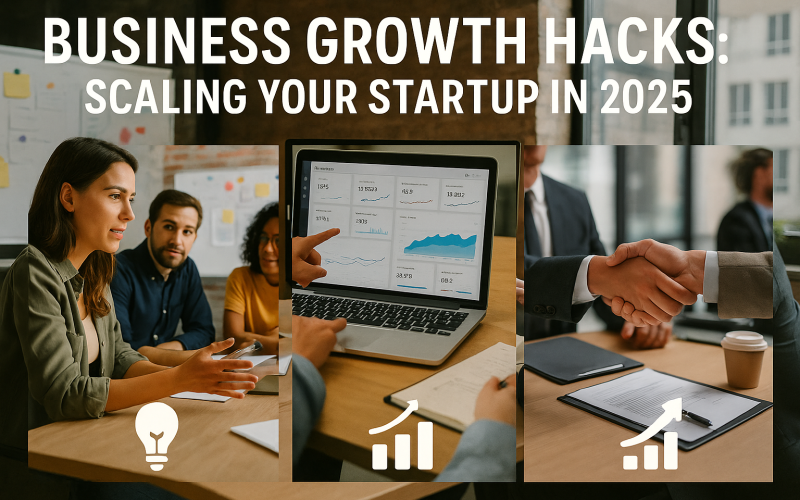Introduction
Scaling a startup feels like juggling plates while riding a unicycle. You aim to grow fast, but one wrong move can topple everything. In 2025, the game has changed. Business growth hacks now rely on smart tech, lean operations, and customer‑centric models. As investors demand traction and founders chase the next milestone, having the right strategies can make or break your venture.
This guide walks you through proven ways to scale your startup in 2025. We cover how AI and data can turbocharge marketing, why strategic partnerships open new markets, and how subscription models drive steady revenue. You’ll also learn to cut customer acquisition cost, build a flexible remote culture, and lock in loyal users through customer success. By the end, you’ll have a playbook to grow faster, smarter, and more sustainably. Ready to take your startup to the next level? Let’s dive in.
What is scaling your startup?
Scaling means growing your business without a matching rise in costs or complexity. It’s not just about hiring more people or increasing sales—it’s about doing more with less. When you scale right, revenue jumps while your cost per unit drops.
In 2025, scaling involves technology, process, and people. On the tech side, you automate routine tasks with AI and cloud services. On the process side, you streamline workflows so you can onboard customers in minutes, not days. And on the people side, you empower teams with remote tools and clear goals.
True scale also rests on data. By tracking key metrics—like customer acquisition cost (CAC), lifetime value (LTV), and churn—you know what works and where to double down. Scaling without data is like driving blind. With data, you find growth levers and plug leaks fast.
Finally, scaling is a mindset. It means building systems that survive founder burnout. It means testing small, iterating fast, and investing in what truly moves the needle. In 2025, startups that master this mindset set the pace for entire industries.
Growth Hack #1: Leverage AI and automation

Artificial intelligence is no longer sci‑fi; it’s table stakes for any startup aiming to scale. From automating customer support with chatbots to optimizing ad spend in real time, AI frees up your team to focus on strategy and relationships.
For example, AI‑powered marketing platforms analyze campaign performance across channels. They shift budgets to the best‑performing ads and pause underperformers automatically. Sales teams use AI tools to score leads, predict deal close rates, and suggest outreach messages that resonate.
On the operations side, automate invoicing, payroll, and data entry. Use robotic process automation (RPA) to handle repetitive tasks—like order processing or invoice matching—at a fraction of the time and cost of manual work.
To get started, identify one high‑volume, rules‑based task in your workflow. Test an AI or automation tool, measure time saved, and reinvest those hours into growth activities. As AI tools mature in 2025, startups that adopt early gain a competitive edge by operating lean and fast.
Growth Hack #2: Use data‑driven decision making

Data is your north star in scaling. Collect, interpret, and act on metrics to refine product, pricing, and marketing. In 2025, advanced analytics platforms let you stitch together customer journeys across web, mobile, and offline channels.
Begin by choosing 3–5 key performance indicators (KPIs) tied to growth. These might include monthly recurring revenue (MRR), CAC, LTV/CAC ratio, churn rate, and net promoter score (NPS). Use dashboards that update in real time so you catch anomalies and trends immediately.
Data‑driven startups run experiments. They A/B test landing pages, pricing tiers, and email subject lines. They measure each test rigorously and double down on wins. A small uptick in conversion—say 2–3 percent—can drive substantial revenue when scaled across thousands of users.
Data also informs resource allocation. If analytics show that organic search drives higher‑value customers than paid ads, shift budget accordingly. In 2025, startups that treat data as a core asset—training teams in basic analysis and giving everyone access—outpace those that guess or gut‑feel decisions.
Growth Hack #3: Forge strategic partnerships

You don’t have to go it alone. Partnerships can unlock new audiences, cut acquisition cost, and add credibility. In 2025’s interconnected economy, collaborations range from co‑marketing to embedded integrations.
Identify non‑competing firms that share your target market. For instance, a fitness app might partner with a health food delivery service. You co‑brand promotions, offer mutual discounts, and cross‑promote via email and social.
For SaaS startups, building integrations into established platforms—like CRM or ERP systems—can generate a steady stream of new users. Many buyers prefer tools that plug directly into their existing stack. An integration partner gains by offering more value; you gain by piggybacking on their distribution.
When negotiating partnerships, focus on aligned incentives. Structure deals so both sides win—revenue share, joint events, or co‑branded content. Track performance with transparent metrics. In 2025, startups that weave strategic alliances into their growth playbook can access markets that would have taken years to build alone.
Growth Hack #4: Optimize customer acquisition cost

CAC measures how much you spend to gain one paying customer. Lowering CAC without sacrificing quality customers is a key growth hack. Strategies include referral programs, content marketing, and targeted ads.
Referral programs reward existing customers for bringing in friends. Dropbox’s famous referral initiative boosted sign‑ups by 60 percent with minimal marketing spend. In 2025, you can automate referrals within your app and track invites in real time.
Content marketing—blogs, webinars, and podcasts—builds trust and drives organic traffic. High‑quality guides that solve real problems rank well on Google and can fuel a steady stream of qualified leads. Combine content with SEO best practices: keyword research, internal linking, and mobile‑friendly design.
For paid channels, refine your targeting with lookalike audiences and AI‑optimized bids. Continuously prune underperforming keywords and ads. Shift funds into high‑ROI campaigns and experiment with emerging platforms—like in‑app ads on fitness or finance apps.
Measure CAC by channel. If one channel’s CAC exceeds LTV, cut or optimize it. Smart startups monitor CAC daily and treat it as a living metric that guides budgeting and strategy.
Growth Hack #5: Build a remote‑first culture

Remote work is here to stay, and it can supercharge scaling. By hiring globally, you access diverse talent pools, save on office costs, and maintain flexibility. But remote success requires intentional culture and processes.
Start with asynchronous communication. Use shared docs and recorded updates to keep teams aligned without forcing them into meetings. Tools like Slack, Microsoft Teams, and Notion can centralize project plans and decision logs.
Set clear expectations around work hours, deliverables, and response times. Trust your team to manage schedules. Use weekly all‑hands calls to share results, celebrate wins, and reinforce mission and values.
Invest in remote onboarding. Provide self‑guided training modules, assign mentors, and schedule social calls so new hires build relationships. In 2025, VR onboarding rooms let new employees explore a virtual office and meet colleagues in realistic avatars.
A remote‑first startup can scale headcount fast without physical constraints. Just keep culture at the forefront—regular check‑ins, virtual team events, and channels for casual chat maintain connection and morale.
Growth Hack #6: Implement subscription and recurring revenue models

Predictable revenue fuels investor confidence and eases planning. Subscription models—from software‑as‑a‑service (SaaS) to curated product boxes—convert one‑time buyers into loyal, long‑term customers.
Subscription success hinges on value delivery. Each renewal must feel worth the price. Offer tiered plans so users can upgrade as they grow. Include usage insights, premium support, or exclusive content in higher tiers.
Implement dunning management to reduce involuntary churn—automate payment retries and send friendly emails when cards fail. Analyze reasons for cancellations and address them through product improvements or win‑back offers.
Recurring revenue also applies to physical goods via rental or access models. Companies like Rent the Runway let customers rotate wardrobes for a monthly fee. In 2025, more startups will adapt subscription logic to everyday products—tools, kitchen appliances, and even fitness equipment.
Recurring revenue smooths out cash flow and creates upsell and cross‑sell opportunities. It’s a proven hack for sustainable growth.
Growth Hack #7: Invest in customer success and retention
Acquiring a customer can cost five times more than keeping one. Customer success teams focus on helping users get real results from your product, driving renewals and referrals.
Build a customer success framework: assign success managers to high‑value accounts, create self‑service knowledge bases for smaller customers, and use in‑app onboarding guides. Track customer health scores—combining usage frequency, support tickets, and NPS—to spot churn risks early.
Engage users with regular check‑ins, personalized tips, and community events. Invite them to webinars, user groups, and feedback sessions. Turn your most passionate users into brand advocates who review, refer, and promote your product.
In 2025, AI‑powered customer success platforms analyze support interactions and usage data to suggest proactive outreach. By acting before customers get stuck, you nurture loyalty and unlock upsell potential.
Tips for Effective Scaling
Scaling faster doesn’t mean growing recklessly. Here are a few tips to keep growth sane:
- Test small, scale large. Pilot new channels, features, or markets with minimal spend before rolling out widely.
- Standardize processes. Document workflows so new hires can hit the ground running.
- Allocate runway wisely. Maintain at least 12 months of cash runway to weather market shifts.
- Foster feedback loops. Regularly collect input from customers and employees to refine your strategy.
- Balance speed and quality. Move fast, but don’t sacrifice user experience or product reliability.
Growth Hacks Comparison Table
| Hack | Key Action | Primary Benefit |
|---|---|---|
| AI & Automation | Implement chatbots, AI ad optimization | Frees up team, scales operations |
| Data‑Driven Decisions | Build real‑time dashboards | Eliminates guesswork |
| Strategic Partnerships | Co‑marketing, embedded integrations | Access new audiences |
| CAC Optimization | Referral programs, precision ads | Reduces cost per user |
| Remote‑First Culture | Asynchronous work, robust onboarding | Global talent, lower overhead |
| Subscription Models | Recurring billing, tiered plans | Predictable, scalable revenue |
| Customer Success & Retention | Health scores, proactive outreach | Lowers churn, increases LTV |
Conclusion
Scaling your startup in 2025 means blending smart tech with human focus. Business growth hacks like AI, data‑driven decisions, and strategic partnerships accelerate expansion. Optimizing CAC and investing in remote culture unlock cost savings and talent. Subscription models and strong customer success teams build predictable, loyal revenue. Remember to test small, document processes, and maintain sufficient runway. With these strategies, you can grow fast yet sustainably, ready to lead your industry into the future.
Call‑to‑Action: Ready to scale smarter? Visit our blog for in‑depth guides, expert interviews, and tools that will power your startup’s growth in 2025 and beyond!












